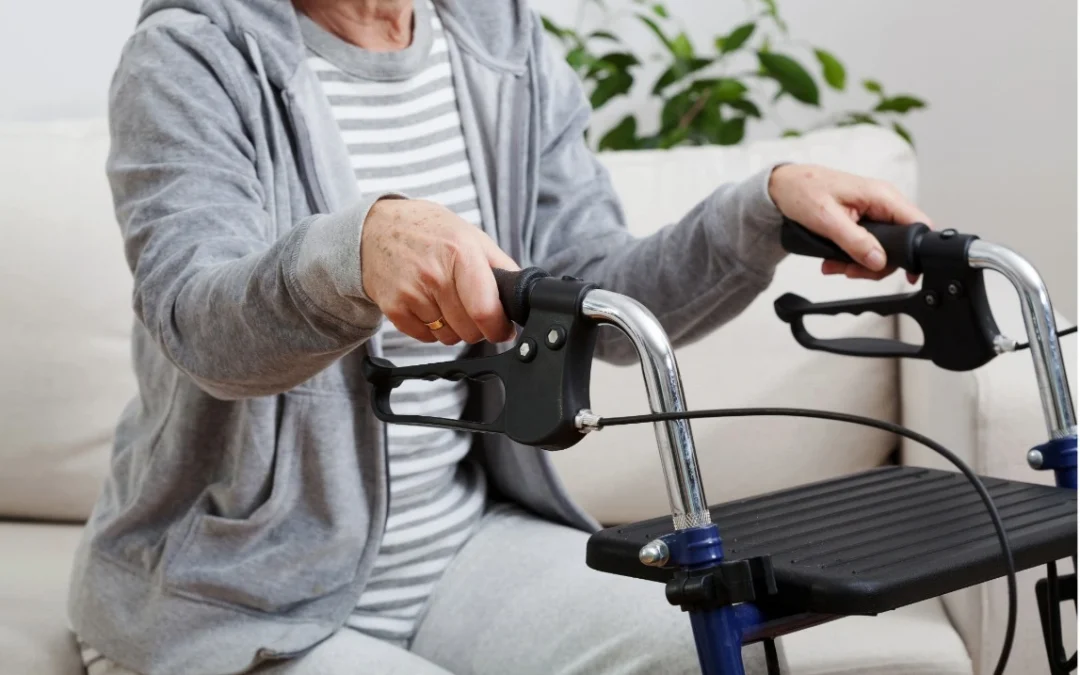Hip or knee pain and immobility — Why it’s not just the joint
By Mr. Khaldoun Bitar Consultant Hip and Knee Surgeon in Wolverhampton
Many patients believe that a painful hip or knee is the reason they can no longer walk or move around. It’s understandable: the joint hurts, you avoid putting weight through it, and you find yourself increasingly sedentary. The assumption is often: “Fix the joint → I’ll walk again.”
But in reality, while a bad joint may significantly limit movement, it rarely causes full immobility on its own. The missing piece in many cases is the loss of muscle strength and conditioning (“sarcopenia”) which develops through disuse, ageing and often additional conditions such as spine disease.
Why Pain Alone Doesn’t Explain Loss of Mobility
-
Joint pain causes you to move less because it hurts.
-
Over time, the muscles around the joint and in associated areas (thighs, hips, core, lower back) weaken due to under-use.
-
When muscle strength falls below a critical threshold, even relief of pain (such as via surgery) may not restore true mobility because the musculature cannot support movement reliably.
-
Many patients with hip or knee osteoarthritis assume the joint is the “blocker.” Yet often the larger block is the muscle and conditioning deficit that has accumulated during months or years of restricted activity.
- This tends to affect older patients as ageing accelerates muscle mass loss.
How Muscle Loss Increases Surgical Risk and Affects Recovery
As a Consultant Orthopaedic Surgeon in Wolverhampton, I emphasise pre-operative assessment not only of the joint, but of the whole functional system.
-
A patient who is wheelchair-dependent, or unable to stand from a chair without assistance, has a high likelihood of marked muscle weakness (sarcopenia) or other impairing conditions such as spinal stenosis.
-
Proceeding directly to elective joint replacement in such cases may carry significantly higher risk and lower chance of benefit, because while the joint may be “fixed,” the capacity to walk or stand still depends on muscle strength, balance, coordination — and potentially unaffected spine segments.
Research evidence:
Sarcopenia is often under-diagnosed in orthopaedic practice yet strongly associated with poorer outcomes and mortality after surgery.
-
In orthopaedic surgery, sarcopenia was linked with poorer recovery and increased postoperative mortality in about 73% of studies (Read article).
-
In hip arthroplasty patients, sarcopenic individuals had higher dislocation rates (OR ≈ 2.19), readmission, and falls risk (PubMed).
-
A meta-analysis of 97,643 surgical patients found sarcopenia associated with increased complications, longer stays, and poorer survival (PubMed).
Spine Issues, Immobility & Muscle Loss — A Common Overlooked Link
Many patients with hip or knee pain also have concomitant spine pathology (for example, lumbar spinal stenosis, spondylosis, facet disease) which may limit walking, standing or extension of the spine.
When the spine limits mobility, the result is reduced gait, less hip-/knee-muscle activation, increased sedentary behaviour → accelerated muscle wasting.
If a patient and surgeon assume that “fixing the hip or knee” will solve mobility, but the spine remains limiting, expectation may be unmet.
In other words: the joint replacement is necessary but not sufficient if the spine (or muscles) remain the key barrier to movement.
Preparing the Body, Not Just the Joint, for Surgery
-
Functional assessment: Can the patient stand from a chair without assistance? Can they ambulate a few steps? These simple tests provide insight into whether muscle strength is sufficient to benefit from surgery.
-
Identify sarcopenia risk: Age, sedentary time, poor nutrition and comorbidities raise this risk.
-
Physiotherapy: Strength training (thighs, hips, core), balance and functional movement.
-
Nutritional support: Adequate protein, vitamin D, and calories for muscle recovery.
-
Spine evaluation: Identify or address limiting spinal pathology.
-
Re-assess candidacy: Re-evaluate functional status post-rehabilitation before proceeding.
Setting Realistic Expectations About Surgery and Mobility
Joint replacement is excellent at relieving pain, improving joint mechanics and correcting deformity.
But mobility restoration depends on muscle health and neuromuscular control.
Patients who understand this often achieve better satisfaction and engagement with physiotherapy and recovery.
“Even if your joint replacement goes perfectly, your ability to walk depends on your muscles and spine too. If these areas are weak or impaired, movement may still be limited.”
Key Messages to Remember
-
Painful hips or knees do not always cause immobility — muscle weakness (sarcopenia) and spine issues often play a larger role.
-
Joint replacement relieves pain but does not automatically restore muscle strength or balance.
-
Inability to stand unaided is a red flag for significant sarcopenia — surgery may offer limited benefit and higher risk.
-
Addressing sarcopenia and spine health before surgery improves safety and outcomes.
Written and medically reviewed by Mr Khaldoun Bitar — Consultant Hip & Knee Surgeon,UK.

